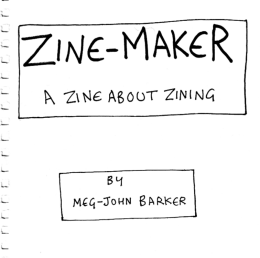Meg-John Barker's Blog
November 24, 2025
Love Uncommon courses: Mapping Your Relationships and Coming Home
Here at Rewriting the Rules we’re happy to be in ongoing relationship with Love Uncommon – a collective whose work is very much aligned with our own (albeit ours is more of an internal collective, and theirs is more of an external one!)
Read on to find out more about their work, and their current – and upcoming – online courses on mapping your relationships (for everybody) and emotional/nervous system regulation (for practioners).
 Love Uncommon Collective
Love Uncommon CollectiveA bunch of great folk are now collaborating with Sophia Graham from Love Uncommon on various projects including:
Our co-author of books like How to Understand Your Relationships , Alex IantiffiMel Cassidy, author of the highly recommended new relationship book Radical Relating Jaï Bristow, who we’ve been interviewed by many times, and who runs the excellent Power, Privilege and Prejudice online courseSome of the folk who also work with the excellent Art of Consent
In particular, there are two online courses currently available, and coming up, on Love Uncommon that readers of Rewriting the Rules might be interested in:
Mapping Your Relationship EcosystemAvailable this week at a 50% discount with the code Holiday50
Sophia and Alex present a wonderful course – for everybody – on how to relate with greater awareness, intentionality, gentleness, and clarity about relational values.
The core concept is creating a visual map of all the significant connections in your life—your inner circle, your community, your relationship with creativity, and even your companion animals and environment. It’s an exercise in taking an honest, holistic look at your world (and there’s an interview with us about mapping inner relationships included)
You can find out more about the course here.And sign up here.Coming Home for PractitionersThe fabulous Daniel Morrison is putting on an online course – over eight weeks in the new year – specifically aimed at therapists, coaches and similar practitioners. It’s all about emotional regulation and mapping, navigating and shaping your autonomic nervous system. Here’s what he says about the course.
You can find out more about the course here.You can sign up here (GBP), here (Euro) or here (USD).There’s a sample free page of the course available here.
You’ll be led through structures to map your own system and learn to recognise states of protection and connection.
We’ll adventure together through your inner landscape, find the ways to navigate and the paths that lead you home.
In this course specially adapted for therapists and coaches, you’ll learn how to bring this important work to clients through deepening your understanding of your own system.
A version of this course should be available more widely in the future – watch this space.
The post Love Uncommon courses: Mapping Your Relationships and Coming Home appeared first on Rewriting The Rules.
September 23, 2025
TenderQueer research/practice for The Polyphony
We’ve just had a piece published as part of a QUEERCIRCLE takeover on The Polyphony web platform. We’ve been huge fans of The Polyphony for years, and it’s a great place to have our work published because it focuses on the overlap between medicine/health (including mental health, trauma, neurodivergence and disability) and the arts/humanities (including crafting, memoir, fiction, and zines).
Our article brings together several of the research projects carried out at QUEERCIRCLE about the kinds of creative health practices they offer there. We explore what a more intimate and expansive understanding of research might look like, than the one most of us are familiar with. We suggest it could be valuable for all of us to engage in research into ourselves (embodied), our relationships (entangled), and our communities and wider cultures (embedded).

We invite a TenderQueer approach to research and practice, recognising just how painful, vulnerable, and loving it is to stay with the trouble in ourselves, our relationships, and our world through such hard, hard times.
You can read our Polyphony article here.You can read the rest of the QUEERCIRCLE takeover articles here.If you’re interested, you can also check out our QUEERCIRCLE zines about Queer Creative Health, and Researching Ourselves. There’s a review of these zines on The Polyphony here.
The post TenderQueer research/practice for The Polyphony appeared first on Rewriting The Rules.
August 26, 2025
Mapping your relationship ecosystem
Two of our favourite folks have recently got together to produce an online course on Mapping Your Relationship Ecosystem.
Sophia Graham from Love Uncommon – who has so many great resources on self-consent among other things – and our beloved co-author Alex Iantaffi have put together an amazing programme of handouts, videos, recorded exercises and more. The course helps you to:
Reflect on your relationshipsCheck in with yourself about whether your relationships reflect your values, intentions and desires.Explore the patterns that play out in your relationships.Get in touch with the reality of your current relational world.
We – plurally – contributed a video interview for the course about how it can be useful to map our both internal and external relationships.
You can find out more about the course here.
And sign up here.
Also, if you’re interested in developing relationship skills, you might want to check out Sophia’s weekly DBT class on distress tolerance for neuroqueers. Details and sign up here.
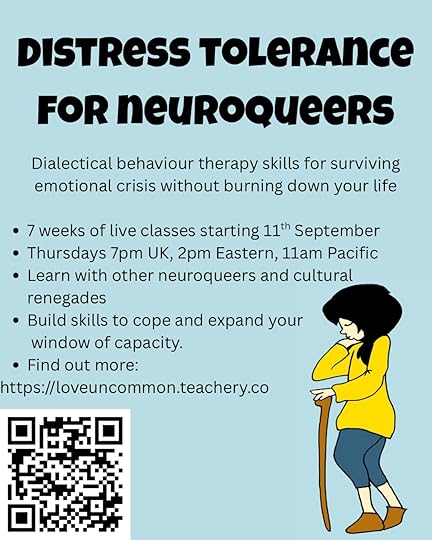
The post Mapping your relationship ecosystem appeared first on Rewriting The Rules.
July 2, 2025
Reset Your Nervous System Super Conference
Now that my new book with Alex Iantaffi, How to Understand Your Relationships, is out in the world (the last book in our How to Understand Your… series), I’m stocked that my interview about trauma and relationships is being included in the Reset Your Nervous System Super Conference.
The interview covers:
How developmental and cultural trauma impact our relationshipsHow to interrupt trauma cycles and have healthier relationshipsThe importance of honesty and kindness
The conference airs on July 21st to 27th. You can sign up for the conference from today, using this link.
The book is out now and you can order it here.
And this zine also covers some of these ideas around relationship struggles.
The post Reset Your Nervous System Super Conference appeared first on Rewriting The Rules.
June 18, 2025
New Zines: Plural Tarot, and Plural Tarot Companion
This post describes the thinking and feeling behind our new zine Plural Tarot (and Plural Tarot Companion).
It takes the form of an interview between the self who created it – Fox – and another self – Ara. If you haven’t read one of our plural blog-posts before and aren’t sure who these people are, feel free to check out our other Plural Selves zines, and our free books about Plurality. But hopefully you don’t need to get that part in order to find the content here interesting.
Location: Fox’s favourite cafe.
Food: Lemon and almond cake, with black americano.
TLDR: Fox has made a new zine about plurality and they have all the feels about it. You can find that zine, and a companion zine with more information, here.
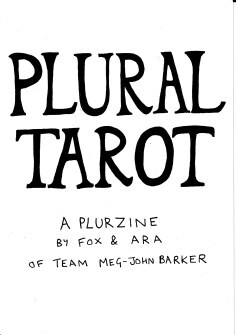
Ara: Well here we are.
Fox: So many different ‘here’s since last time we did one of these.
Ara: Geographically different, plurally different, and perhaps more here-and-now than we’ve ever been. Have we ever shared a conversation between us before?
Fox: I don’t think so. I always did these interviews with James in the past: About my monster feelings zine three years ago, and my triangles and circles zine a year and a half ago. In the plural conversation blog posts we did back around 2020 I think we both talked to other selves but never to each other.
Ara: And you and I probably talked the least overall too. There’s a strange sense that the most subsidiary characters are running the show these days. Which is reflected in your new zine of course.
Fox: About that…
Ara: Yes, about that. D’you want to start by saying what it is?
Plural Tarot Zine
Fox: Sure, oh so many things to say!
Ara: Maybe start with the basics.
Fox: Ok, so this zine is an almost purely image based zine, and it is made up of a set of drawings based on the major arcana of a tarot card deck. It tells the story/ies of our plural journey through those cards.
Ara: What made you decide to draw tarot cards?
Fox: It’s a funny one. I think we’ve had the idea to do a creative project based around the tarot since we were a teenager and we first came across tarot. We were always drawn to magical, mystical things: ghost stories, folklore, fairy tales. And we also always wanted to draw pictures, and write stories, from our imagination. At one point we created a whole notebook with the headings of the major arcana characters, thinking we’d come up with stories relating to each one.
Ara: Ah so this project represents a kind of return to both themes and processes that we disowned and disallowed over the years.
Fox: Right! I guess we never completely let go of the idea that we might draw pictures and write stories, but we found kind-of ‘acceptable’ ways of doing those things in the worlds we inhabited, like using creative methods in academic research, or publishing graphic guides illustrated by someone else, or using supernatural themes to explore aspects of human struggles.
Ara: We’ve continued to gradually allow ourselves to return closer and closer to those early passions – topics we’re fascinated by and creative practices we love – as we’ve returned closer and closer to you, our littlest one.
Fox: I hadn’t seen that. So this zine is big for me, being purely based on a kind of mystical storytelling, and entirely using pictures.
Ara: I also love that sense of a slow, slow journey to finally complete this project, over the course of our whole life. We waited till we finally knew the shape it needed to take, and then it just flowed.
Fox: Watch this space for our book of fairy tales, and ghost stories, which we’ve also imagined for nearly as long.
Why Tarot?
Ara: Back to the tarot. Can you say why it particularly appeals to you?
Fox: Well it’s interesting because we don’t generally practice tarot in the conventional sense. We have occasionally done tarot spreads – where you shuffle the deck and see which cards come out – in order to explore a particular question or issue. But generally I don’t tend to do that. I find it’s more aligned, for me, to choose a particular card – or cards – deliberately to have on our altar as a reflection of something we’re going through, or a quality we want to cultivate for whatever we’re facing. A bit like we do with Pema’s compassion cards.
Ara: There’s something about the range of cards that there’s always one that seems to match where we’re at, or what we’re working on.
Fox: Right. And I guess the Major Arcana cards particularly represent archetypes: particular kinds of characters that recur again and again in stories in many different cultures. And we have the sense that the selves – and parts of selves – that we’ve met in ourselves are both unique to us (our life, our culture) and resonant with the selves – and parts of selves – that we’ve met in others, and hear about other people grappling with in themselves.
Ara: Mm, so these cards are a particularly good mechanism for representing one particular journey, and for depicting a journey that others may find something familiar in.
Fox: I think/hope so. And as always it’s so fine if this doesn’t resonate with others. People have different ways of taking in information: visual images certainly don’t work for all bodyminds. And people will have different feelings about tarot: they might struggle with anything ‘woo’, have bad experiences with them, or prefer other systems that are more aligned with their faith or spirituality, for example.
Ara: Interesting that you chose tarot when our primary spirituality is Buddhist/non-dual.
Fox: Yes. I did have that in mind during this project actually. When we wrote our book about Mindful Therapy we did an illustration of the Buddhist ox herding picture (included in the Plural Tarot Companion Zine). I feel like it has a similar vibe to tarot. It depicts someone setting out on a journey, the challenges they face along the way, the ways the path isn’t perhaps what they expected at all, and then this kind of return to the beginning. That’s something I like about both the ox herding pictures and the tarot, that they are circular rather than linear.
Ara: The ox herding pictures end with the character returning to the marketplace with helping hands, and the major arcana with The World. There’s a sense that these journeys fetch us right back where we started, but perhaps – hopefully – a little more able to be in our worlds, our relationships, our projects in helpful ways.
Fox: Right, there’s a common image of a spiritual path taking people up the mountain, away from everyone else, to a place of transcendence. But teachers like Pema and Adyashanti say it’s much more about going down into the depths and the mess and the pain where everyone else is. Learning how to be with all that in ourselves, and in others and in the world.
Ara: It reminds me of those blog posts we wrote about Stephen King’s It: Reading it as an invitation down into the storm drains, to address our personal and collective trauma. That’s what you’re depicting in these cards.
Fox: Right. We really did it, these last five-to-seven years. So another way of understanding this zine is as, kindof postcards from the end of the world: both literally in terms of what the world is facing, and metaphorically in that when you go down into your personal hells and underworlds it feels like the end of the world. That’s the feeling you’re confronting, and you really don’t know if you will be able to survive it.
Ara: A way of depicting what we’ve been through, and being alongside others who are going through such times, perhaps offering a kind of solidarity, even hope.
Fox: Right, and not like hope as in a linear narrative, like ‘follow this path, or set of steps, to get to a better place’. It’s more queer/neuroqueer/mad than that, challenging narratives of healing, recovery, or happily-ever-after. But it does show that things are impermanent, that there is movement, through these experiences, especially if you can meet them, and be with them, rather than resisting them (and that is a big if, a lot of the time it’s more being with the fact you can’t help resisting them!) Am I saying too much?
Ara: Just the right amount of saying.
Fox: It’s like it’s this huge project that is all of these things to us, and about everyone and everything (all at once). And it’s also just a way of saying ‘this is what we were up to the last few years’, and ‘we’ve moved (literally and metaphorically)’. Heh moved and returned. Full circle.
Ara: Of course we have. We’ve recently marked a kind of ending, or transition, from our five years of deep retreat, by moving back to Yorkshire, where we’re from originally.
Fox: Which the last card in the deck represents, but it’s also a return to the first card, and it kindof holds all the other cards, and selves, in the one card, and in you-and-me.
Ara: Maybe we can dig into some of the specific cards in a bit. For now I guess we’re saying that, for us, this zine is a way of honouring our journey, and all of our selves, as well as communicating something to others which they might find useful or resonant themselves.
Fox: Thankyou. Yes. I can get tangled in the words.
Ara: Words can be tangley. I love that you communicate so well through pictures and stories.
Fox: They’re good for the feelings.
Inspirations and ideas
Ara: Can you say a bit about your inspirations for this zine, how you came up with the idea?
Fox: Mm, yes. Like I said, something had been lurking since we were young. But we hadn’t actually worked/played with tarot much until a few years back when we got the Wild Unknown deck. I think it was around the time we came out as non-binary because we were drawn by a deck that was all animals and plants rather than humans. Not completely without gender-ing, but definitely more open when it came to gender. Since then we’ve seen a few other decks that represent more gender – and other – diversity, or which don’t have humans in them, but the Wild Unknown remains our favourite. I guess these kinds of decks got me thinking though, whether – rather than depicting differently gendered people – a deck could depict the many-gendered sides of the same person.
Ara: We are indeed a many-gendered thing.
Fox: Heh. Now you are sounding like James!
Ara: *smiles*
Fox: So playing/working with the Wild Unknown got me thinking in these directions, especially when I discovered Carrie Mallon’s writings about them which really clicked with me. But the thing that made me realise I could do this was receiving Lea Cooper’s Mad Tarot zine. Lea uses the Major Arcana to explore/honour a mad journey through a period of their life. That helped me realise that (1) I could just do the Major Arcana rather than creating an entire tarot deck, (2) I could do it as a zine rather than creating a deck of cards, and (3) I could use it to honour this intense period of our neuro/queer/mad/plural journey.
Ara: Lea’s writings about zines, madness, trauma, and disability were also helpful, including questioning linear narratives.
Fox: Definitely. Then another click moment was thinking about sevens. We are seven selves. Well we are other numbers but seven the most. I realised that each suit of the tarot has fourteen cards – so two sevens. Also there are four suits which map onto the four elements, and our four initial selves, the two who were most living our lives, and the two who were most unconscious/underneath/traumatis-ed/ing. I wondered if the Major Arcana also had sevens, and then I realised that there are 21 cards – if you take off The World which is a kind of encompassing everyone/everything card. So three sevens. So I could use the first seven cards to introduce each of us, the second seven to depict our journeys, and the final seven to depict the ways we’ve transformed during the process.
In some ways that is a linear story – or stories – beginning, middle, end, but it also challenged and complicated that, the way some of the later cards appear in the background of earlier cards, and the way things that happened in one ‘third’ overlapped things that happened in the other thirds. Or we kindof knew where things were going, even when we struggled like hell to believe it. In many ways each of the faces of each self that we depict were always already there, as well as evolving over time. Phew. Many words.
Ara: You’re doing great love.
Fox: It was fun gradually playing with which cards would go with each of us.
Ara: That gets into our process. Do you fancy talking about that next?
Fox: Yes please. Always my favourite. Makes me feel like a proper artist.
Ara: You are. So proper *smiles*
Our creative process
Fox: Ok, so for a while it was very much an idea I was playing with. Like we’re still playing with our fairy tale project. That’s another one that tells our seven stories through familiar narratives and archetypes. We’ve written two of them but we’re still playing with what the other five stories will be. With projects we tend to get immersed at the point that enough of it clarifies.
Ara: And that happened with Plural Tarot?
Fox: Right. It happened once I had enough of the cards mapped onto each of us, at least in the first and second third of the deck, plus quite a clear visual of how some of the cards would look.
Ara: And did you draw them in a linear way?
Fox: Heh you know the answer to that (yes it did feel right to do them in order somehow, except the two that are deliberately out of order). And I do include you on the cover as a co-creator because it wasn’t just me drawing them.
Ara: It feels like it was mostly you, but I would step in occasionally when you were struggling, either to help you step away, or to take over on a tricky bit of inking.
Fox: Urgh the tricky bits!
Ara: We can come back to those. I’m wondering which cards you got clear images for first?
Fox: *grin* well Robin’s cards all came first. I remember having such a clear image of The Devil while we were out walking one day. It was always going to look like that. And Robin as The Fool was obvious, because his leaping in (to us, to the world, and to specific situations) was the beginning of our whole journey. And Robin and Morgan were always going to be The Lovers, of course.
Ara: Of course. That’s such a good card.
Fox: Thank-you. I think I actually got started properly partly because I had some sense of the whole first seven cards, and partly because it felt like such a good way of honouring everything and everyone in the run up to our big move.
Ara: It felt like we wanted a project for that time that would be personal (not something for somebody else), and that wouldn’t be returning to an old project, or starting something too big and new.
Fox: That’s it. This was a good fit. And I generally find drawing projects quite gentle to incorporate into our days when things are intense. Even when we’ve got a lot going on internally, there’s usually a time when I can draw for an hour or two, or ink a previous drawing. Inking can be quite soothing if I’m struggling, and easier if I’m not in such a creative place.
Ara: Can you say a bit more about your process with each card?
Fox: Right. Well generally I don’t start till I have a pretty good mental image of it. If I reached a card which I hadn’t quite figured out yet, I would look at the classic Rider Waite version of the card, and the Wild Unknown one, and read Carrie’s words, and online stuff, about the meaning of the card. Even if I did already have a sense of the card, those often helped clarify it. A bit like Easter Eggs I enjoyed adding in elements that were a nod to the Wild Unknown or some other deck, as well as to previous projects we’ve done.
Once I had it pretty clear I’d generally sketch it out rough. That helped to plan where everything needed to go on the page. Then I’d look up online any features that I wasn’t confident about how to draw. I’m so grateful to all the artists who put up easy to draw ‘how to’ images. Then I’d pencil draw the card. Often I’d only need to do it once, but some cards took several goes before I got it right in pencil.
Ara: What about feelings?
Fox: Right! Sometimes when a card wasn’t coming right, I realised I wasn’t in touch enough with the feelings I was trying to convey. Interestingly sometimes that was the key when something wasn’t coming right. Like it was hard to draw Robin and Morgan on the bed in The Sun, and I tried over and over looking for online images of people sitting in that position. But what finally sorted it was feeling in my body the kind of loving holding that I was trying to get across: the kind we remember them doing. So sometimes being able to see what something actually looks like helped, but often it was more about fully feeling it.
Ara: And then?
Fox: Once they were pencil drawn, we went over the lines with pen, and rubbed out the pencil. After that there was sometimes a bit of tweaking needed before we scanned them. Like we needed everyone to look roughly the same from card to card, so we had to go back and redo your Empress because we realised from Death that you needed to be wearing a hooded robe.
Ara: Tippex comes in handy.
Fox: It does, and in The Devil card we really struggled to get the top half and the bottom half both right on the same page, so we ended up cutting it in half and gluing it on: a lot less pressure. I found it very affirming at the Steven Appleby exhibition to see how some of her original comics have tippex and glued on bits. I know we probably could put our images on a drawing computer program and alter them there, but for me part of the joy of making comics and zines is doing it all by hand.
Relationship with Previous Zines and Comics
Ara: You mentioned the Easter eggs to your previous work. Can you say a bit more about how Plural Tarot relates to our other plural zines, and other zines?
Fox: Absolutely. It’s a bit different from our other plural zines (Plural Selves 1, Plural Selves 2, and Triangles and Circles of Selves) because it’s all pictures, and there’s no element of it being a work/play book with suggested activities for the reader. But it does kind of go with Plural Selves 2 because it introduces the same selves that we introduced there, except with more of a sense of their journeys over time. The zine it’s most similar to is Welcome Monster Feelings because that is all images, and it has the similarity that the images come from really tuning into the feelings and putting them on the page. The difference is that Monster Feelings was depicting emotions, whereas this zine is more explicitly depicting each self (in the emotional states that we’re familiar with them being in).
Ara: What about the chalkboard comic?
Fox: In a way it is full circle back to chalkboard, because we made that comic seven years ago when we first realised that Jonathan was stuck in this horrific place internally: the chalkboard room. That comic imagined how the rest of us might help him get out of that room. Whereas this Plural Tarot zine depicts how we did get him out: how he got out, and how the rest of us helped by doing our journeys. So the first image of Jonathan in Plural Tarot – The Hierophant – is him in the chalkboard room. I had a lot of fun with that card because, if you look carefully, you’ll see that all the boards represent diagrams that we’ve made – at some point along the way – to try to understand or explain our plural system.
Ara: So meta.
Fox: I know right!
How readers might engage with the zine
Ara: I know that this zine doesn’t explicitly include any guidance or activities for readers of how they might engage in a similar process: any kind of self-help component like a lot of our work has. But do you think there’s an implicit invitation there?
Fox: Hmm, well I know that the few people we’ve shown it to already have definitely resonated with the cards. I guess it’s that thing that sometimes when creators share the most personal things those end up being the ones that the most people connect with and see themselves in.
Ara: I was also thinking, does it invite people into imagining their own selves, or parts, or journeys, through the tarot?
Fox: Oh it might well do. I mean that’s what Lea’s tarot zine did for us. I’d love it if it sparked other people to make their own tarot zines, or images, however made sense to them.
Ara: Have you got any suggestions how readers could engage with the zine, if they wanted to go further than just appreciating it as artwork?
Fox: Mm, well certainly it could be interesting to take some time with each image to reflect on it. What feelings come up when they look at it? Does it remind them of any part of themselves, or experiences in their own life, or things happening in the world? Or they might consider which cards they feel most drawn to (and/or repelled by) and do some journaling around that. Or people might want to take one card and imagine what their version of the card would look like, perhaps drawing it, or collaging it (like Lea’s cards), or going to another medium if they prefer. The Welcome Your Monster Feelings zine and Queer Creative Health 1 and 2 zines give a lot of ideas on how you can adapt visual art to a different medium. You could make plasticine or lego models, for example, or write short poems, haiku, vignettes, or stories, or make a playlist or a recorded soundscape, or dance.
Ara: And people could make it a long project of working through the whole major arcana, or even the whole tarot deck, or just pick a couple of relevant cards and play with those.
Fox: Right. And even if you do a whole section of seven, or all twenty two, you may find certain cards dominate and find their way into the others, like The Tower did in ours. Really it was all about how we went through The Tower time.
Ara: Maybe if we did it again it at a different time in our life, another card would dominate more.
Fox: So interesting. And of course how people make their cards will depend on their experience of self/ves. Some plural systems might have different selves for each card. Some people with a more singular experience might depict the same self through all the cards. Carrie Mallon’s own tarot deck is fascinating for showing the cards from the perspective of the characters, rather than depicting the characters themselves. There’s so many different ways to do it.
Ara: Might you cover some of this in the companion zine? The way you did for Monster Feelings?
Fox: Yes. Maybe a page or two of suggestions for how people might work/play with our zine, and/or create their own. But the companion zine I have in mind is more of a set of brief paragraphs about what the cards meant to us. And those read a bit more like poetry or memoir: a kind of in-words version of the cards themselves. I’d like to share that for people who want a bit more about the meanings of each card: What they mean to us and what they mean in general. And I’m thinking of including a couple of poems Robin and Morgan wrote, and a song playlist to go with the cards: a few bits and pieces like that.
Ara: I love that: like patchwork, or one of those old kids’ annuals.
Fox: Exactly. When I imagine a whole book on this theme it makes sense to write it more like an annual, with lots of different sections.
Where next?
Ara: Is that the direction y/our creativity is headed in d’you think?
Fox: I think so. It’s definitely still a work in progress. I know that I love these more creative projects: drawing and telling stories. For a while I wondered if we needed to let go of the other kinds of creativity we’ve done in the past: the more academic writing, maybe even the self-help style writing. Now I’m not so sure. I still love the idea of mashing up these things together. And I have a sense of wanting to honour Max’s past projects by curating them into new editions where needed, as well as wanting to write some more formal pieces for therapists who are working in the areas we write about, for example. Lately I thought it’s a bit like Dunbar’s number for relationships.
Ara: Go on.
Fox: Well we value all the relationships in our life – all the people – and we recognise that we can’t spend as much time and energy connecting with everyone. So we have that concentric circles idea where we place our closest, kin-type, relationships in the nearest ring, then the next layer of close friends, and so on. My sense is similar with creativity. The inner circle projects are the ones that feel closest, most aligned, the kind of deep love projects, like this one, but we also value – and spend some time and energy, with the next layer out ones, and the ones that just come around once in a while for some attention, and so on.
Ara: With people and projects, connections and creativity, endeavouring to bring the same quality of presence, valuing, at/tending, to all of them, and recognising some will be woven more closely into our lives, some less so.
Fox: Yes!
Ara: Do you have a sense which projects might be next for you/us, after this?
Fox: Mm we keep making a start on a whole book about plurality – Incorrigibly Plural – and we have some good stuff but it still doesn’t feel like we are quite in the place we need to be to write that whole book. Maybe getting closer, but still not there. I think I’d like to at/tend to some of the fiction projects we have done, finishing those off, before returning to try that book again.
Ara: We do have two chapters on plurality coming out in Nick Walker’s collections – about plurality – next year, plus all these zines and collected blog posts.
Fox: Yeah. I am itching to weave it all together in one book, and share some of our more recent thinking and practices. I think we’ll know when it’s time for that.
Ara: So meanwhile some fiction?
Fox: Yeah and maybe curating one or two of our/Max’s older books that are coming around for new editions. We’ll feel into it.
Ara: We will. Okay last question, the one we’ve been waiting for. Not that we’re into hierarchies, but do you have a favourite card?
Favourite cards!
Fox: I guess it depends how you define ‘favourite’.
Ara: How would you define it?
Fox: Mm, a kind of ‘rightness’. There were cards where we finished and it was just like ‘that’s it’. Like it captured the self, and the feeling, all of it spot on. All the cards managed it well enough, but with some we were left questioning certain elements, wondering whether we might return to them and rework sometime.
Ara: It was helpful to remember that many tarot deck illustrators do rework the cards over the years. Which ones were like that for you?
Fox: The Wheel of Fortune I wasn’t completely sure of. I was trying to depict all the different sides of Robin and Morgan, and those faces don’t quite capture some of the anguish, or the feral-ness of the two who were ‘down the bottom’ of those subsystems. Plus I wasn’t sure if Max and Jonathan ought to be on the wheel as well, at the top and bottom like in the shame compass (as avoid and withdraw). But after reflecting I realised I like the simplicity of the eight faces. It could get over complicated if we did it those other ways.
I also wasn’t sure about your Empress card. We had to tippex you out to put you in the right outfit, with the right hair, after we did your Death card. I’m not sure if it’d be better to glue on a new bit of paper and draw you in fainter lines because you’re far away. But I kind of like how you look a bit ragged, like the moon on that card.
Ara: And what about the ones that felt totally right?
Fox: The first card I remember feeling like that about was The Lovers. Not an easy thing to draw but almost everyone I’ve shown it to has said ‘that’s so hot’! And then when I drew Justice it was like ‘oh no, this is The One’. It meant a lot, that one, too, because Morgan is our (reformed) inner critic: our rejecting/rejected self. For so many reasons it felt important to me to depict her right. I think that card captures her beauty and rage and pain, all of it: the complexity of all selves like her who are capable of great harm, but comes from such places of hurt and trauma.
Ara: It’s a stunning card. You did her proud.
Fox: Thankyou *smiles* The next card that felt very right, for me, was your Death card.
Ara: I love it.
Fox: We’ve tried to draw you many times and it’s never felt quite right, but that was it. That’s what Ara looks/feels like *exhales*
Ara: It feels so good to have that sense of me. I remember when Morgan very first came through as a self – Beastie we called her back then – and one of the first things she did was to ask you to draw her.
Fox: ‘Give me form’ she said *smiles*
Ara: You did such a good job love.
Fox: It was super hard drawing her on her transformations cards. I really had to work at dropping what I thought she should look like on those cards and letting her look how she needed to look, if that makes sense. She ended up being lot more delicate somehow.
Ara: Because she is deeply vulnerable too, I imagine all critic/rejecting/raging selves are.
Fox: The Strength card was another spot on one, and makes us laugh. We managed to get our weird secret love of Firefighter dramas (like Station 19 and Chicago Fire) in there, and James is ridiculously Mr Steady Endurance, ‘I can handle anything’!
Ara: *Chuckles*
Fox: And then the last three cards. Those were such a surprise. I knew exactly what I wanted to draw for the previous ones in that section, but had no idea for the last three – our cards really – you and me. So I thought they’d take ages, but we did one a day for three days with hardly any preparation. They just flowed out.
Ara: And the feeling again. You just tapped into the feeling.
Fox: Heh I guess they were easiest because they are all my feelings – direct – not me remembering how the other selves felt. My frightened vulnerability (The Moon), my grief and forgiveness (Judgement), and my ‘back in the world’ feeling.
Ara: What is that feeling would you say?
Fox: Hm, is there a feeling word for gratitude, delight, trepidation, wariness, determination, creativity, connection, coming full circle, total not-knowing, alertness, relief, stillness, motion…?
Ara: I think they’re all in there.
Fox: What about you? What’s your favourite card?
Ara: I do like Judgement. All those three, but Judgement particularly. I think it gets our love – yours and mine – our relationship really well. I love how all the transformation cards are all about our inner love relationships, and capture the quality of those. Like how James loves Morgan and Robin, how they love each other, how Max and Jonathan love each other, how we love all of them.
Fox: Ah yes. I didn’t consciously intend for it to be that, but that’s what it is. And it feels good. A big part of why we set out on this journey in the first place was to learn to love ourselves, because we/Max didn’t even really know what that meant, or what it could feel like.
Ara: And here we are.
Fox: Here we are. Loving.
The post New Zines: Plural Tarot, and Plural Tarot Companion appeared first on Rewriting The Rules.
May 30, 2025
JKP Writing Prize: Everyday Disability and Chronic Illness
The JKP Writing Prize for 2025 has just been announced with a theme of disability. JKP are the publishers of the books that we write together with Alex. They recently published Alex’s edited collection – Trans and Disabled – which including a chapter by us on plurality.

The JKP Writing Prize is a competition for aspiring writers from underrepresented backgrounds. The theme this year is: Everyday Disability and Chronic Illness: Stories of Joy, Resistance, and Anti-Ableism.
The voices of disabled and chronically ill people remain vastly underrepresented across many sectors, including the publishing industry. JKP are looking for a short 3,000-word submission and the winners will get their work published in an anthology and receive a £150 winners fee.
Please do share on and/or consider entering. You can find all the information you need here.
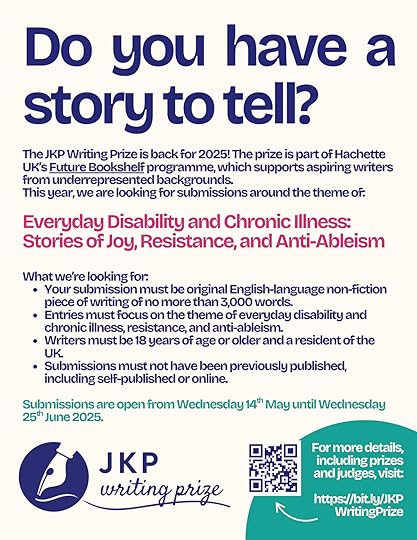
The post JKP Writing Prize: Everyday Disability and Chronic Illness appeared first on Rewriting The Rules.
May 16, 2025
Love Uncommon: DBT for practitioners and more
That course isn’t available yet, but in the meantime we thought to flag up another course that Sophia is starting very soon. If you read our books or other materials you’ll know that we often recommend Love Uncommon’s work around self consent, emotional regulation, and relationship skills, particularly for marginalised and neurodivergent folk.
Check out those links in the previous paragraph if you’re looking for a general course on these topics. Meanwhile here are details of Love Uncommon’s new course for therapists and other helping professionals (like nurses, OT’s, coaches and teachers).
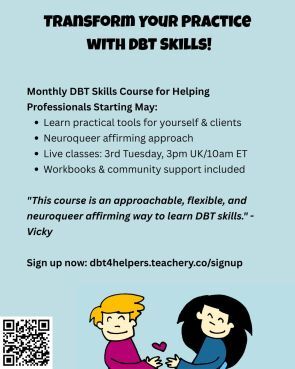
Sophia is teaching Dialectical Behaviour therapy skills with a neuroqueer lens to a small group of queer and neuroqueers. The focus is on learning skills to use in our own lives so that we can share them effectively with the people we help.
The course will cover ways to survive a crisis without making everything worse, how we might orient and ground ourselves in the present moment, and how central pleasure can be in building a better future. If you’re interested in compassionate mental health approaches and believe in the strength of community, this course is for you! Join Sophia Graham at Love Uncommon for DBT skills for helping professionals.
When: 10am Eastern on the third Tuesday of the month for 90 minutes.Where: Live zoom meetingCost: $60 per session (75% off for BIPOC with code globalmajority75)Sign up here: https://dbt4helpers.teachery.co/signup
The post Love Uncommon: DBT for practitioners and more appeared first on Rewriting The Rules.
April 14, 2025
Attachment, Trauma & Toxic Relationships Super Conference
Now that our new book, How to Understand Your Relationships, is out in the world (the last book in our How to Understand Your… series), Alex Iantaffi and I are made up that two of our interviews about trauma and relationships (and one that I did without Alex) are being included in the Attachment, Trauma & Toxic Relationships Super Conference.

There are three interviews in total, covering:
How to understand toxic relationships,How to understand relationship trauma, andHealing from developmental and cultural around relationshipsThe conference airs on April 28th to May 4th. You can sign up for the conference from today, using this link.
The book is out now and you can order it here.
And this zine also covers some of these ideas around relationship struggles.
The post Attachment, Trauma & Toxic Relationships Super Conference appeared first on Rewriting The Rules.
February 22, 2025
Zines Forever!
Thanks so much to the Wellcome Collection for including Zine Maker in their new exhibition Zines Forever! DIY Publications and Disability Justice.
The exhibition runs from 14th March to 14th September 2025 and looks at how zines have been used to share experiences of disability and disabled identity. The Zine Maker zine will be near the start of the exhibition, as part of an introduction to what zines are and why they are particularly relevant to themes of disability (as well as madness/trauma, queerness, and marginalisation more broadly).
The Zines Forever! exhibition is curated by Dr Lea Cooper (artist and zinemaker), and Adam Rose (Assistant Curator, Wellcome Collection).
If you can’t make the exhibition, you can access the Zine Maker zine here. It introduces zines and zine culture, and takes you through a workshop style session to make and plan your own zines.
As well as accessing our zines through this website, you can now find most of them in the Wellcome Collection, along with some of our other resources.
The post Zines Forever! appeared first on Rewriting The Rules.
New zine! Queer Creative Health 2
Queer Creative Health 2 is out now! This zine is a follow up to the first Queer Creative Health zine, also commissioned by Queercircle.
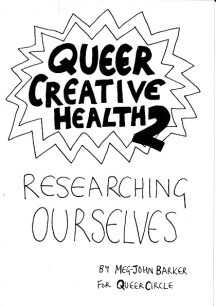
The first zine explored the meanings of queerness, creativity, and health, and what might be gained by bringing these things together. It invited readers into various queer creative health practices at the level of their bodyminds, their relationships, and their wider ecosystems.
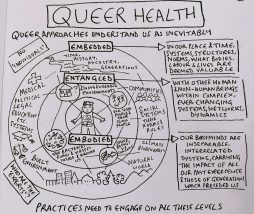
This second zine invites us to consider what it would mean to ‘reasearch ourselves’ alongside – or instead of – external researchers studying queer experience. Many creative, spiritual, activist, and therapeutic traditions encourage such forms of self-exploration, into our gender and sexuality, and our experiences of ourselves beyond this.
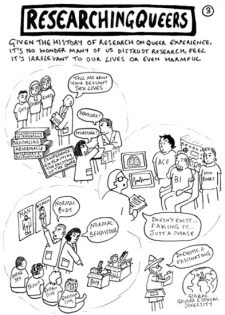
Queer Creative Health 2 explores how we might research: how we identify ourselves and name our experiences, how our bodyminds work, what forms of care, creativity, and collectivity work for us, and how we relate to our wider ecosystems. Woven throughout is an exploration of collective and personal trauma, and the value of slowness.
You can download the pdf of the zine here. If you read the zine online you can click on the links to connect to all the resources mentioned.
Zeena Feldman has written a lovely review of the zines over on The Polyphony:
Zeena Feldman reviews Queer Creative Health, a zine series by Meg-John Barker produced for and with London-based LGBTQ+ charity Queercircle.I am an academic. My professional culture is one of seriousness. It is a culture that asserts authority through empiricism and peer-review. It traffics in the language of objectivity and highly credentialled expertise. It isn’t a scene easily associated with playfulness or accessibility. Which is a shame because I like playfulness. And I don’t think one should need a PhD to lay claim to knowledge. This is why I love zines.
In many ways, zines are everything academia isn’t. They’re democratic. They’re radical. And they most definitely are not interested in respectability. Zines are teenage protest, insistent on liberation here and now, with no fucks to give. They are the antithesis of journal articles, which give middle age vibes, steeped in carefulness and a perennial insistence that more research is needed.
Or so I thought until I read Meg-John Barker’s just-published Queer Creative Health 2: Researching Ourselves (2025) and its predecessor, Queer Creative Health 1 (2023). These zines manage an unexpected hat trick: seamlessly combining emancipatory politics and a DIY ethic with research rigour and care. The zines are fun but they’re also earnest. Barker is a writer and zine maker, a former therapist and a recovering academic (my words, not theirs) who has published extensively on sex, gender and relationships. In other words, someone well-practiced in guiding people along difficult corridors of thought, tenderly.
They created Queer Creative Health (QHC) for and with Queercircle, a Greenwich-based LGBTQ+ charity that “believe(s) in the radical potential of the arts for individual, collective and societal transformation”. Queercircle calls itself an “organisation-in-process”. I like that descriptor a lot. It’s an ambitious and bracingly honest remit that regards change as life’s constant companion. This is an organisation committed to the journey, not one hung up on the destination. Read more…
The post New zine! Queer Creative Health 2 appeared first on Rewriting The Rules.
Meg-John Barker's Blog
- Meg-John Barker's profile
- 333 followers




